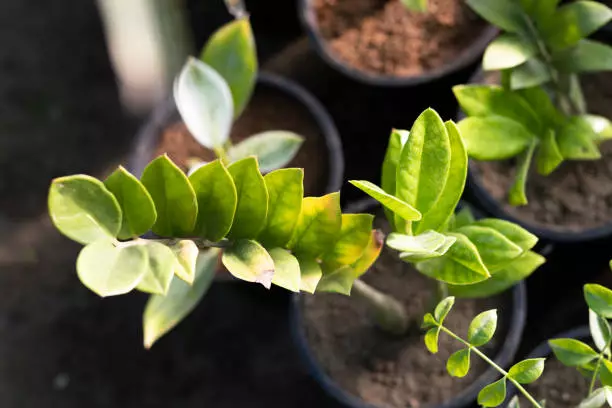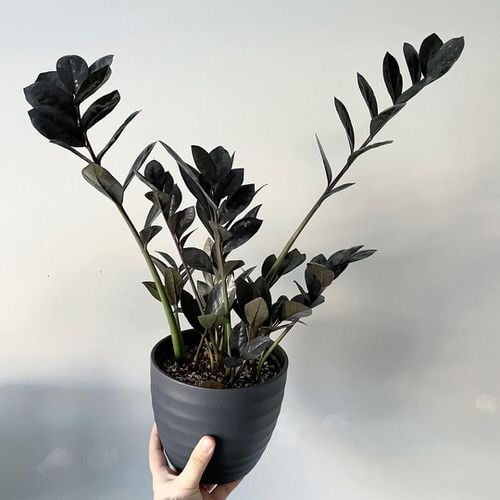Pothos (Devil’s Ivy or Money Plant) can grow into beautiful, heart-shaped leaves and have a vine-like appearance. But, if not properly taken care of, pothos may never grow fast, full, and bushy. Instead, the plant will look leggy. So, how can you make your pothos fuller and help them climb?
Prune pothos often to help the plant grow fuller while preventing it from becoming leggy. Feed the plant with a balanced fertilizer twice a month and provide sufficient lighting and water to help pothos grow fuller faster. Also, stake your pothos to offer support and encourage the growth of bigger leaves.
If you prefer the fuller appearance, read the succeeding sections for tips on what you can do to your Pothos for a fuller, bushier look.
Why is my pothos leggy and thin?

The best place to start is diagnosing why your pothos is leggy instead of growing bigger leaves yet you’re doing everything right. The reason could be anything from fertilizer, light, water, disease, or even soil quality.
Here’s why pothos may be thin and leggy:
- Inadequate light
- Lack of nutrients in the soil
- Lack of pruning
- Inadequate water
When a pothos plant is leggy, it means that it is growing tall but producing just a few, small leaves – usually 1-2 feet apart, which is a common characteristic of trailing plants that receive insufficient light.
Pothos will, therefore, grow fewer leaves that are spread far apart to expend less energy, relative to the minimal amount of light being received. Leggy vines also occur as a result of the plant stretching toward the source of light.
This, coupled with the thin stems, is what results in the spindly/leggy appearance instead of the bushier, fuller appearance.
How to make pothos fuller and bushier

The best way to make pothos fuller is to prune the plant and provide adequate nutrients, light, and water. If you leave the houseplant to grow and spread on its own, it will stretch for light and develop long vines with sparse leaves.
Here’s how to make pothos fuller and grow faster:
1. Prune pothos effectively
The stems of Pothos that are never pruned tend to gradually thin down with sparse leaf placement resulting in a spindly appearance. To help pothos grow fuller fast, prune your pothos every time you feel it is growing leggy.
Here’s how to prune your pothos:
- Mark each vine where you want to cut it back.
- Cut the vine ¼ inch above each leaf to allow a new vine to grow at each node after pruning.
- Cut off any leafless vines completely (because they’ll not regrow).
- Repeat the process for each vine on the plant.
Pothos can tolerate heavy pruning, so do not be afraid to cut back the plant every time you feel you need to help it spread into a bushier growth instead of letting it climb too high.
Proper pruning using the right tools and methods stimulates branching that helps your plant grow full, with even bigger leaves. The tools you may need to use include a pair of shears (I use the Felco F-2 Manual Pruner), and a pair of gardening gloves. To encourage branching from the top of your Pothos, you’ll want to prune off the stems that are growing downwards.
Also, the proper way to prune is to trim just below the leaf nodes; this way, you won’t be leaving behind any new stems that haven’t yet sprouted any new growth.
2. Apply a balanced fertilizer
Pothos are not heavy feeders, but when growing thin and leggy, try fixing nutrient deficiency. Apply a 20-20-20 fertilizer 1-2 times a month to make it grow fuller. Use a water-soluble fertilizer such as Miracle-Gro and apply just enough to stimulate the faster growth of pothos.
Fertilizing your golden pothos will stimulate the growth of new foliage. This method is especially helpful if your pothos is still in the same pot that it was initially planted in. When applied at least once a month, natural fertilizer options like compost can significantly boost pothos leaf growth, resulting in a bushier look.
To properly apply solid compost, mix it into the soil using a hand trowel, then- water the plant and the soil for instant activation of the fertilizer. For liquid fertilizers, mix with some water and spray the solution onto the plant and the soil beneath it.
Remember to follow the manufacturer’s directions for proper dilution, as you don’t want to burn your pothos leaves with concentrated fertilizer.
Also, if your pothos is growing on a water medium such as a hydroponic system – not soil – you’ll want to avoid this method; as fertilizer in water can encourage the growth of algae, which will consequently lead to pothos root rot.
RELATED: BEST HYDROPONIC SYSTEMS THAT ARE GOOD FOR YOUR PLANT
3. Stake your pothos
Staking a trailing plant means offering it support on which to grow- much in the same way as wild vines wind around taller trees in the jungle. You can stake your Pothos using a bamboo cane, a moss pole, a trellis, or something else that’s similar.
But how does staking my golden pothos and satin pothos make it grow full?
The effect of staking is that winding plants tend to grow larger leaves closer together when offered support. Introduce this support early on while the plant is still young, as staking is a slow, long-term solution.
Pothos can become top-heavy especially if well-fed. As a result, the vines might need a little help in carrying the weight as the leaves grow bigger. If your pothos is not growing full, stake it to provide adequate support for the plant to spread, climb and become fuller.
4. Provide enough light
The main reason pothos develops a leggy look is due to sunlight deficiency. Plants that are grown in poorly-lit areas will stretch towards the source of light, resulting in each leaf node being spread out farther apart from one another.
The simplest way to make the houseplant grow fuller is to move it to a place with sufficient light such as near a window. Pothos like moderate indoor light but when outdoors, they can be grown in shade or partial shade. Avoid exposing pothos to direct sunlight as this can cause leaves to wilt and curl.
If you’re growing your pothos indoors and don’t want to move them to an area that’s better lit, you may have to consider the use of artificial plant lighting solutions like LED grow bulbs. Choose a lightbulb that produces a grow light-type spectrum.
RELATED: HOW TO TREAT CURLING LEAVES OF POTHOS PLANT
5. Plant multiple pothos together
Pothos have small root systems that don’t spread out as far as many other plant species. You can plant up to 3 pothos plants together in the same pot for a fuller look with more foliage than you would get from growing a single plant.
You can even grow different types of pothos in the same pot so long as the care is great. You can plant satin pothos, golden pothos, neon pothos, etc. in the same pot to achieve a fuller houseplant with a mix of leaf colors.
6. Provide adequate water
While Pothos don’t necessarily need a lot of water to thrive, under-watering your houseplants certainly won’t help encourage new leaf growth. Inadequate water will lead to wilting, leaves turning yellow, and stunted growth.
To help pothos grow fuller fast, do the following:
- Allow the soil to dry between waterings
- Water your pothos every 1-2 weeks, or more often if exposed to bright sunlight.
- Provide enough drainage in the pot to allow excess water to drain away easily.
Ensure a proper watering schedule for your pothos, making sure to check the soil for dryness before each successive watering session. To avoid overwatering, you’ll also want to check whether there’s any excess water coming out of the growing pot’s drainage holes as you’re watering.
RELATED: HOW TO SAVE YELLOWING LEAVES OF POTHOS PLANT
How big do pothos plants grow?
When grown indoors, pothos can grow 6 – 10 feet long while in the wild, Epipremnum aureum can grow up to 40 feet long. The plant will grow while trailing and forming leafy vines, achieving a fuller appearance quite easily.
As indoor plants, you can help pothos grow big and full by pruning and staking while feeding, watering, and providing sufficient light.
How often should I prune my pothos?
You can prune your pothos as often as you want to make it bushier. Pothos can tolerate heavy trimming and the cut-back stems always grow back, so long as you stick to the proper trimming method. This includes cutting back the stems about a quarter of an inch above the leaf scars and pinching back the stems during peak growth seasons to stimulate further branching.
Therefore- if you trimmed your Pothos stems a month or two back and feel like they need another trim but are worried whether it’s too soon to prune again- go ahead and put your pair of shears to work.



